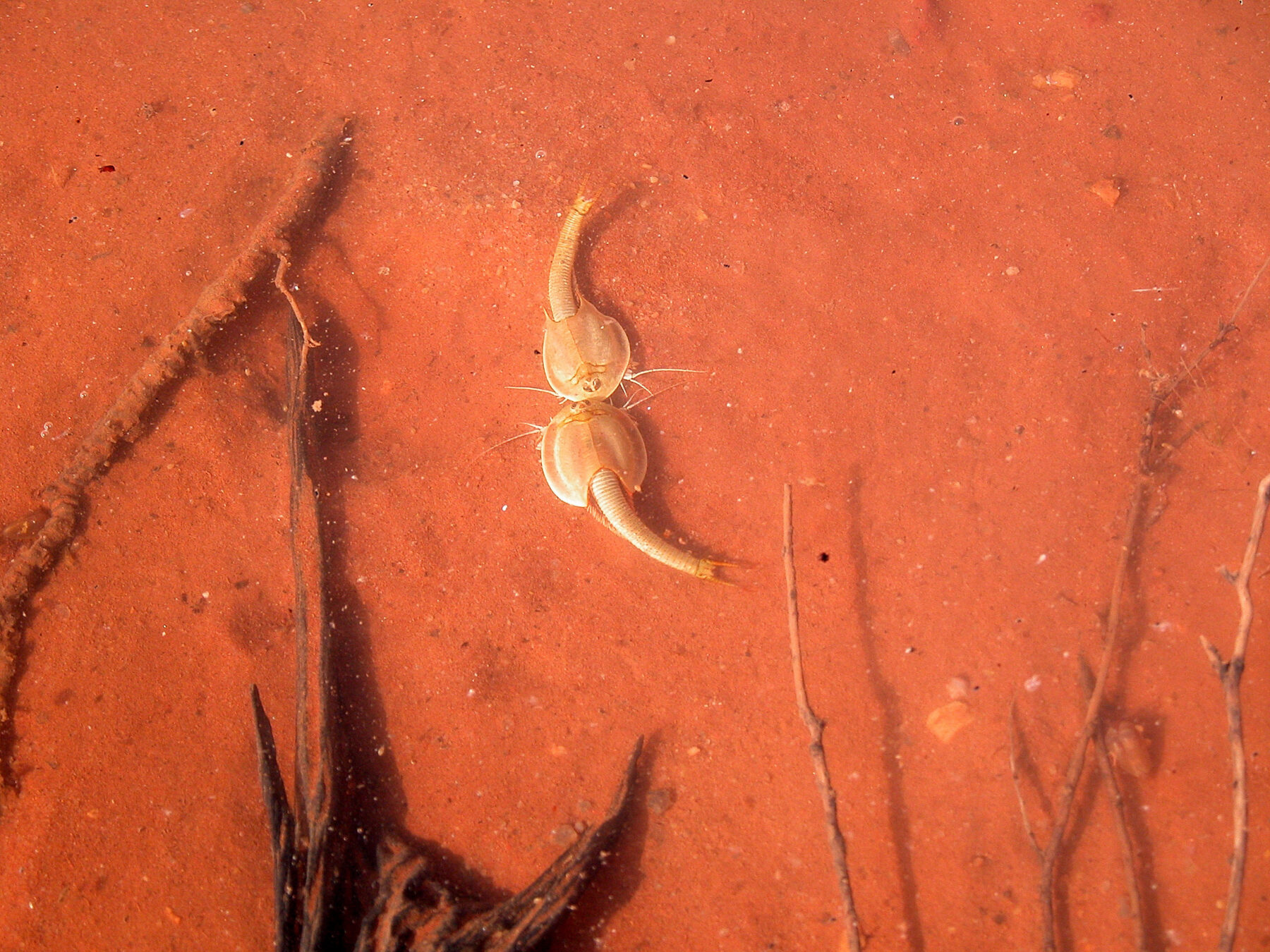Australia’s only shield shrimp

Bec Crew
Bec Crew

When it rains across Australia’s vast inland region, temporary pools crop up all over the arid ground, giving life to a strange desert crustacean known as the shield shrimp (Triops australiensis).
Named after the formidable carapace that shields its head and upper body, T. australiensis can grow up to 7.6cm long, and it uses its long, segmented tail and mass of 60 or so legs to propel itself through shallow water.
It also breathes through these legs – its sub-class Branchiopoda means ‘gill-legged’ – and in the females these legs bear ovisacs for carrying their tiny eggs.

Only one Australian species of shield shrimp
The only species of shield shrimp native to the Australian mainland, T. australiensis can be found wherever it’s hot and dry, spawning in tiny rain-pools, drainage ditches, freshwater lakes and dams.
They’re most often found in pools and lakes that periodically dry up, which suggests that their eggs need to be completely desiccated for some time before the larvae can inside develop and hatch when they get wet again.
This means the dried up eggs can be dispersed easily by the breeze to different locations, plus it doesn’t matter if periods of rain are few and far between. Just as dried-up brine shrimp eggs are sold as ‘sea monkeys’, T. australiensis are sold in pet shops as a powder that can be brought to life with water.
When it hatches, T. australiensis begins life as a type of crustacean larva called a nauplius. It’s at this stage when an odd third eye appears above the creature’s usual pair, and it will retain this ‘naupliar eye’ into adulthood.
Compared to the regular pair of eyes, the naupliar eye is quite simple, containing just a few light-sensitive cells to help the shield shrimp move towards or away from the light.




